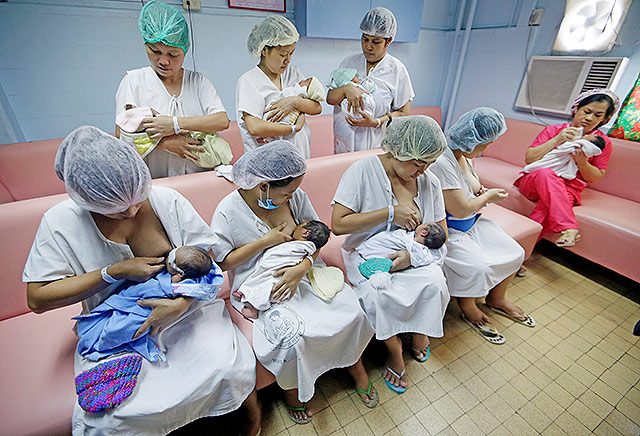SUMMARY
This is AI generated summarization, which may have errors. For context, always refer to the full article.

MANILA, Philippines – How can you fight something not easily detected?
Chronic malnutrition, which hinders children from achieving their maximum genetic potential, is not immediately visible. Its effects are manifest in the long run via failed growth or stunting, which is shortness for one’s age.
Stunting starts even before birth and is often caused by poor feeding practices and poor maternal health, among others.
One in every 4 children under 5 years old is stunted globally. 80% of these student children live in just 14 countries, mostly in Asia.
In the Philippines, the latest National Nutrition Survey (NNS) of the Food and Nutrition Research Institute (FNRI) found out that 7.9% of all Filipino children under 5 years old are stunted.
The lifelong impact of chronic malnutrition definitely affects millions worldwide. Unfortunately, it isn’t seen in most countries as a public health crisis. (READ: Why you should care about stunting)
Lifesaving six
No matter how severe the effects of chronic malnutrition are, it is still preventable.
One of the ways the irreversible effects can be prevented from even happening is ensuring that they get the right nutrition. The World Health Organization (WHO) said that nutrition interventions can be done during the first 1,000 days of a child. (READ: Malnutrition, Peter Pan, and never growing up)
But for international humanitarian organization Save the Children, there are 6 key factors in ensuring the best health for mothers and children alike:
1. Breastfeeding
According to experts, breast milk is the “cheapest medicine” a child can get as it provides key micronutrients needed to ensure successful cognitive and physical growth in a child.
Exclusive breastfeeding is highly encouraged during the first 6 months of a child so the risk of malnutrition is lessened.
2. Complementary feeding
It is considered the best way to battle chronic malnutrition but it should be timely and appropriate based on the needs of a child. Complementary feeding can also serve as provider for essential nutrients once breastfeeding is done.
3. Zink
Zink helps children recover from diseases such as diarrhea and helps prevent a recurrence. To date, diarrhea kills about 1.3 million children annually, making it a public health issue.
4. Iron
Maternal mortality is increasing each year. Through effective consumption of iron folate, the risks of a mother dying during childbirth is lessened. It can also help in enhancing the cognitive development of a child.
Iron can be sourced from dried beans, peas, grains, and meat.
5. Good hygiene
By maintaining good hygiene through proper handwashing and access to safe water, the transfer of viruses to a child can be prevented.
Viruses in unsanitary sources can cause diarrhea and other gastro-related diseases. (READ: Preventing food contamination: 5 ways to ensure food safety)
6. Vitamin A
An appropriate amount of Vitamin A can do good things to a child’s health. It can prevent him from catching common diseases by strenghtening his immune system, while also preventing blindness. Unfortunately, almost 190 million children do not get enough Vitamin A globally.
The effects can however be prevented if children and mothers consume enough carrots, potato, and green leafy vegetables.
Cheaper than treatment
If the “Lifesaving Six” concept is properly followed, more than two million mothers and children can be saved from malnutrition-related diseases and death.
According to Save the Children, it will only cost $20 (P885)* for each Lifesaving Six to be provided for the first 1,000 days of a child.
It is significantly lesser than the estimated millions of dollars spent and lost due to malnutrition globally.
Prevension is definitely better than cure in more ways than one, especially when it comes to the welfare of children. – Rappler.com
Do you know any other nutrition interventions especially for children? Tell us in the comments or tweet using #HungerProject!
*$1 = P44
Add a comment
How does this make you feel?
There are no comments yet. Add your comment to start the conversation.